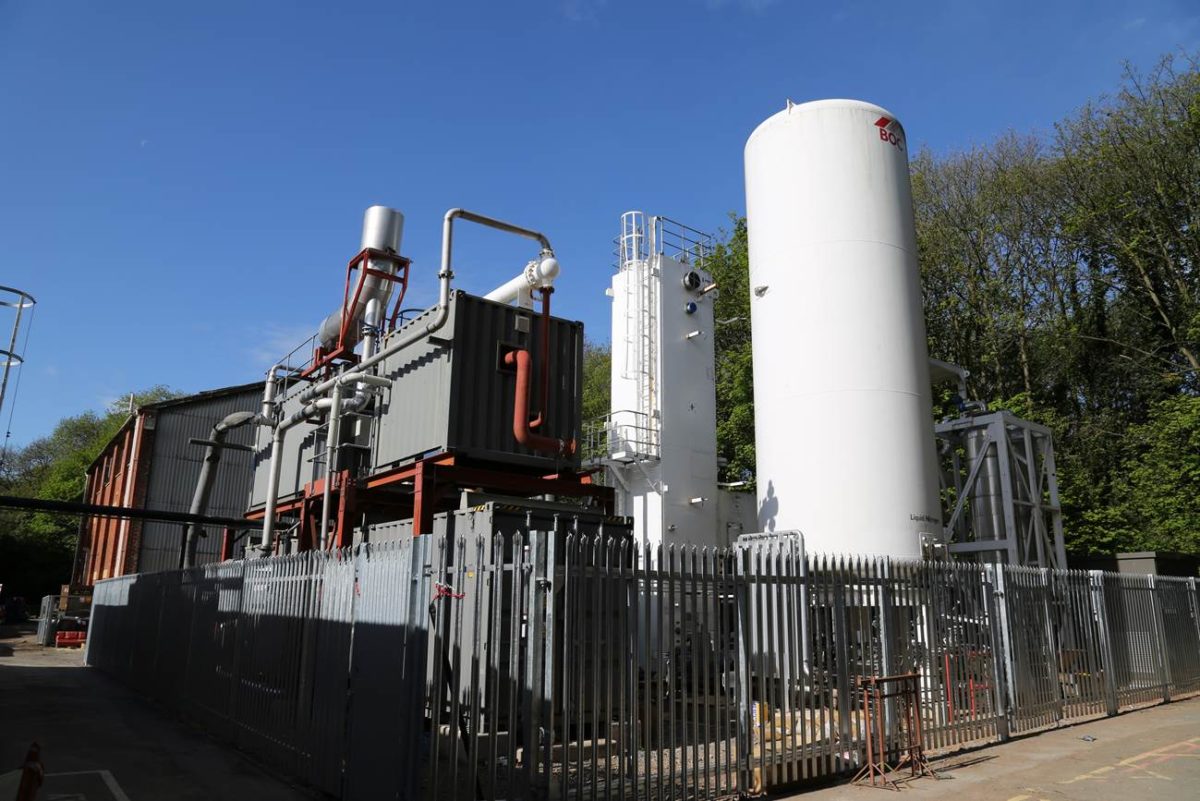From pv magazine International
A group of scientists from the University of Birmingham, in the United Kingdom, and the University of Melbourne, in Australia, has investigated, in an extensive research, the potential of liquid air energy storage (LAES), which has so far seen development for large scale energy storage, and it has been mostly developed by U.K.-based specialist Highview Power.
The company is currently preparing to deploy LAES technology in a range of locations including a 400 MWh system in the United States, a 250 MWh project in the United Kingdom, and a 300 MWh facility in Spain. “LAES has, currently, a technology readiness level (TRL) of 8,” research co-author Adriano Sciacovelli told pv magazine. The TRL measures the maturity of technology components for a system and is based on a scale from one to nine, with nine representing mature technologies for full commercial application.
Low temperature
The technology is described by the research group as a concept where electricity is stored in the form of liquid air or nitrogen at cryogenic temperatures – below -150 degrees Celsius. It charges by using excess electricity to power compression and liquefaction of the air which is then stored as a liquid at temperatures approaching -196 degrees Celsius. To discharge, the liquid air warms and becomes a pressurized gas that operates a turbine to generate electricity.
It was conceived for utility scale applications and an output ranging from 5 MW to 100 MW. “Compared to pumped-hydro storage, which is based on the same basic concept, cryogenic energy storage has the advantage that it is a technology that can be produced through an established industry and without any expensive or rare material,” emphasized Sciacovelli. “Furthermore, there are no degradation issues and no need for specific locations or the orographic conditions that are needed for pumped-hydro, or of an underground cavity, as for compressed air storage.” Compared to these storage technologies, however, LAES has the drawback of a lower cycle efficiency, for both charging and discharging, which is close to 60%. Nonetheless, cycle efficiency can be increased through integration and co-location of LAES with nearby processes, for example liquefied natural gas (LNG) terminals.
Waste heat
An LAES system produces hot and cold streams during its operation, both during air compression for charging and evaporation for discharging, and these streams can be utilized to improve the system efficiency, or in several industrial process. “Currently, all existing projects are being developed for grid support but decarbonization targets will likely push this technology closer to industrial processes that waste a lot of heat,” Sciacovelli stated.
The ideal location of cryogenic storage is at a grid node with a high share of renewables or an industrial park with large waste of heat. “Cryogenic storage is not directly competing with lithium-ion batteries as it provides storage for a longer duration, from over 10 hours,” Sciacovelli added. “By contrast, for lithium-ion storage, when it is needed for more than between four and six hours, bankability, currently, remains an issue.”
Bankability
In terms of costs, the research group estimated that a LAES system can be built at between €300 and €600 per kilowatt-hour. “Investment return is estimated at approximately 20 years for a standalone system without integration with an industrial facility for use of excess heat,” research co-author Andrea Vecchi told pv magazine. “An ideal location in an industrial park, however, may significantly reduce this time frame.”
All existing projects were defined by the research team as bankable, although they stressed that these positive business cases are favored by certain conditions, including a determined price structure in the energy market and the presence of a grid unable to support high levels of renewable energy penetration. “LAES systems are, so far, conceived as strategic assets for the power network,” Vecchi further explained. “They can provide not only grid balancing but several grid services.”
Furthermore, the scientist went on to say, due to the high energy density of liquid air, cryogenic storage occupies less space than compressed air or pumped hydro. “We estimate that these systems can be smaller by at least an order of magnitude,” he stated.
More details on the research can be found in the paper Liquid air energy storage (LAES): a review on technology state-of-the-art, integration pathways and future perspectives, published in Advances in Applied Energy.
*The article was amended on August 2 to reflect that the estimated cost for a LAES system is expressed in kilowatt-hours.
This content is protected by copyright and may not be reused. If you want to cooperate with us and would like to reuse some of our content, please contact: editors@pv-magazine.com.









Why use LAES costing between Euro 300-600/KWhr… when one can use CAES for less than half this cost and higher “round-trip” Efficiency…